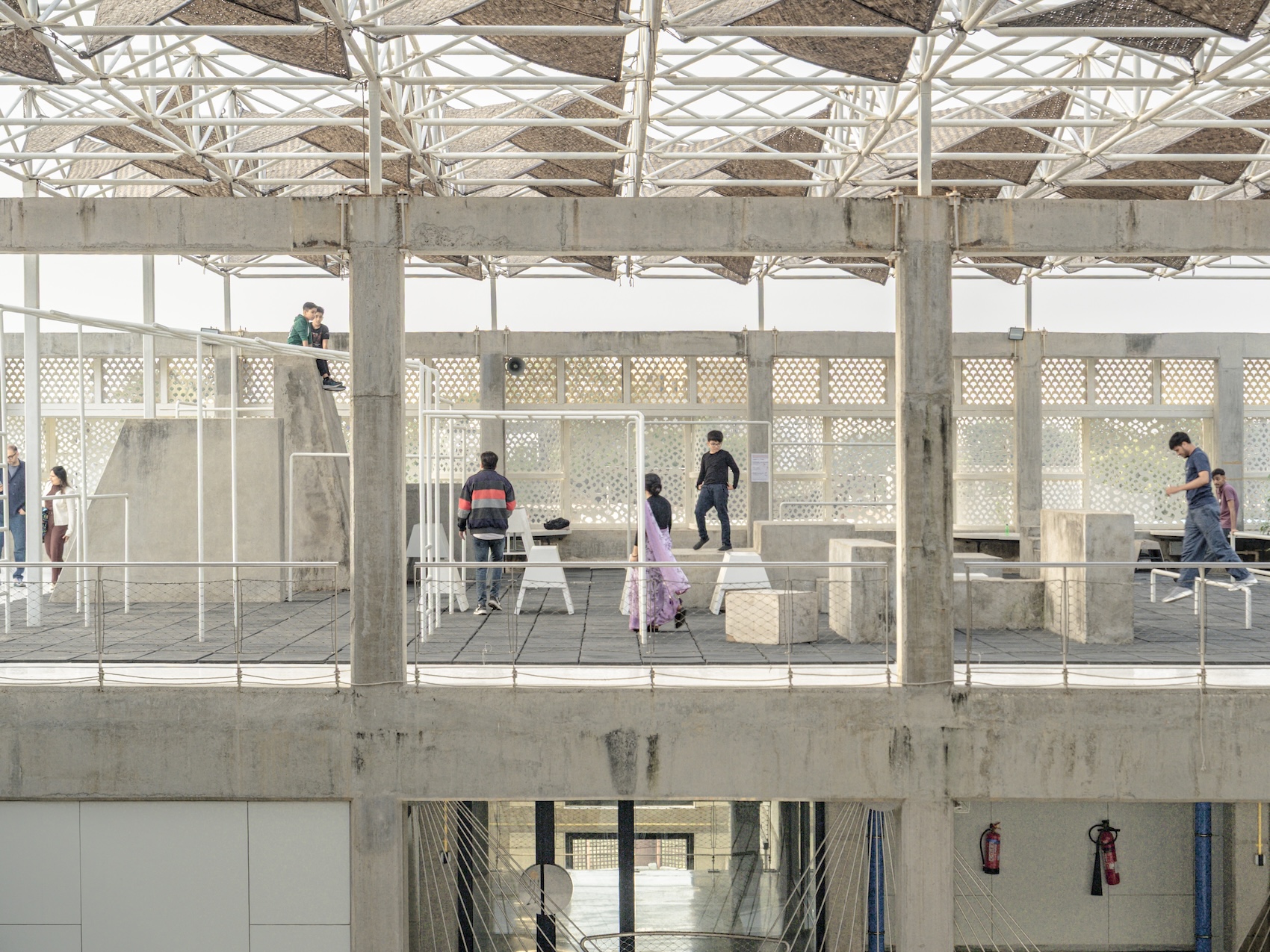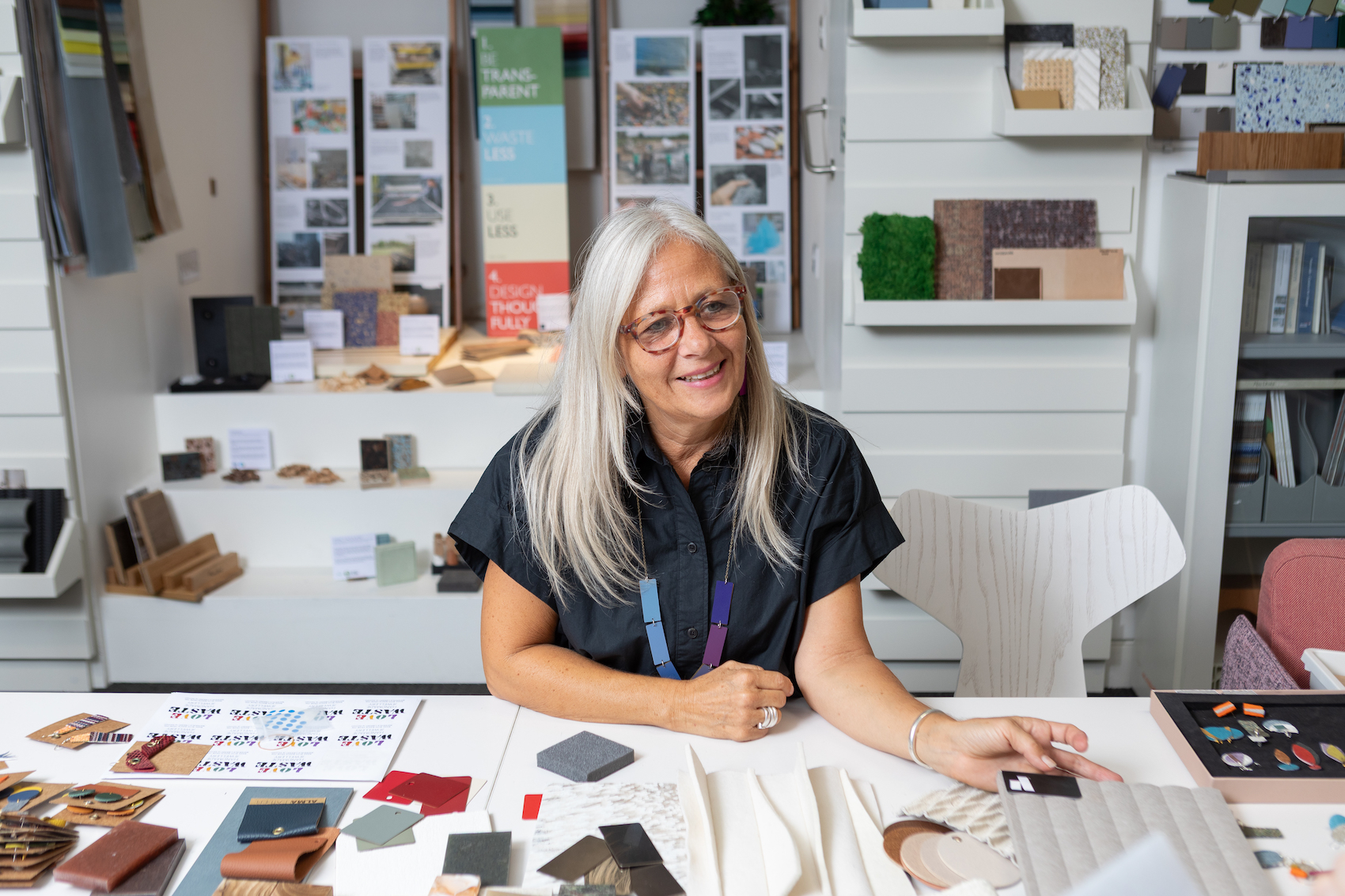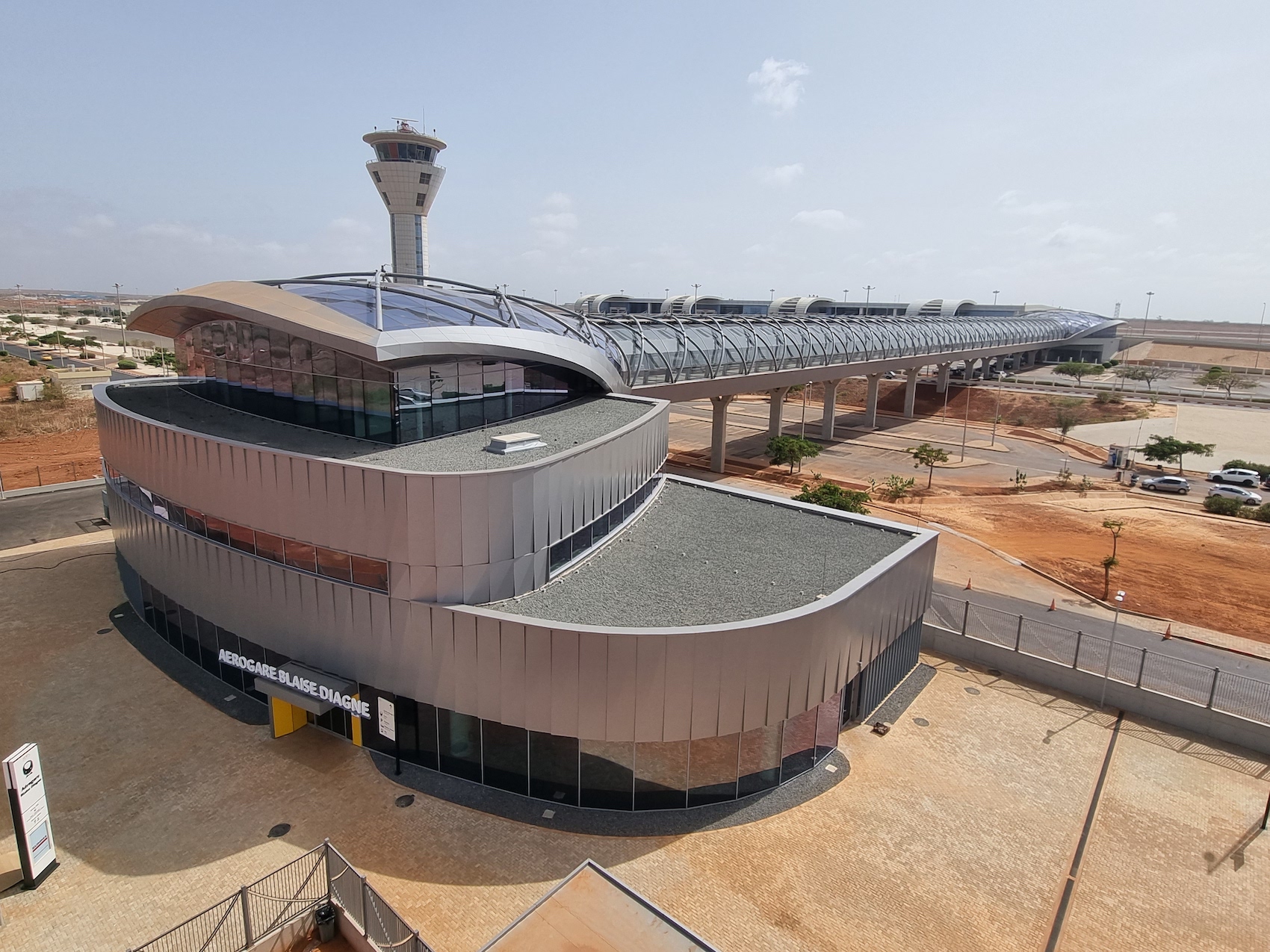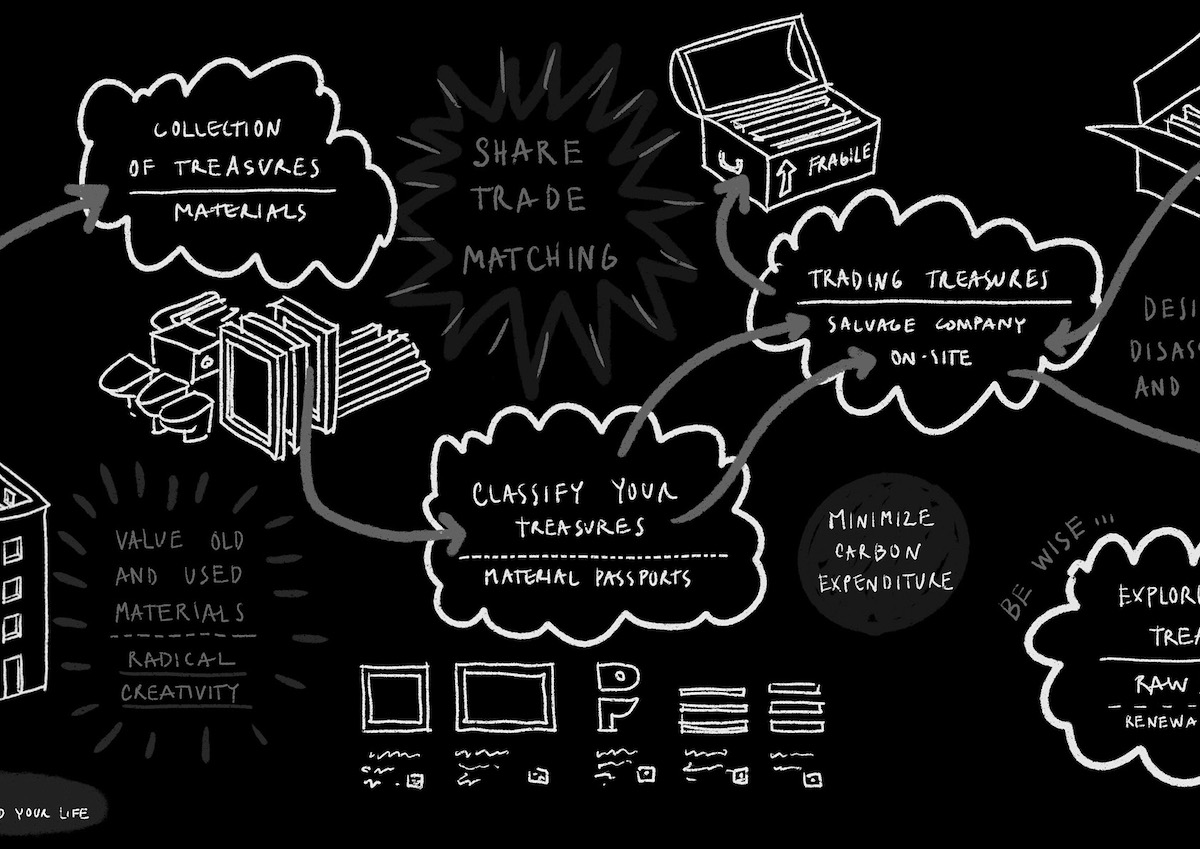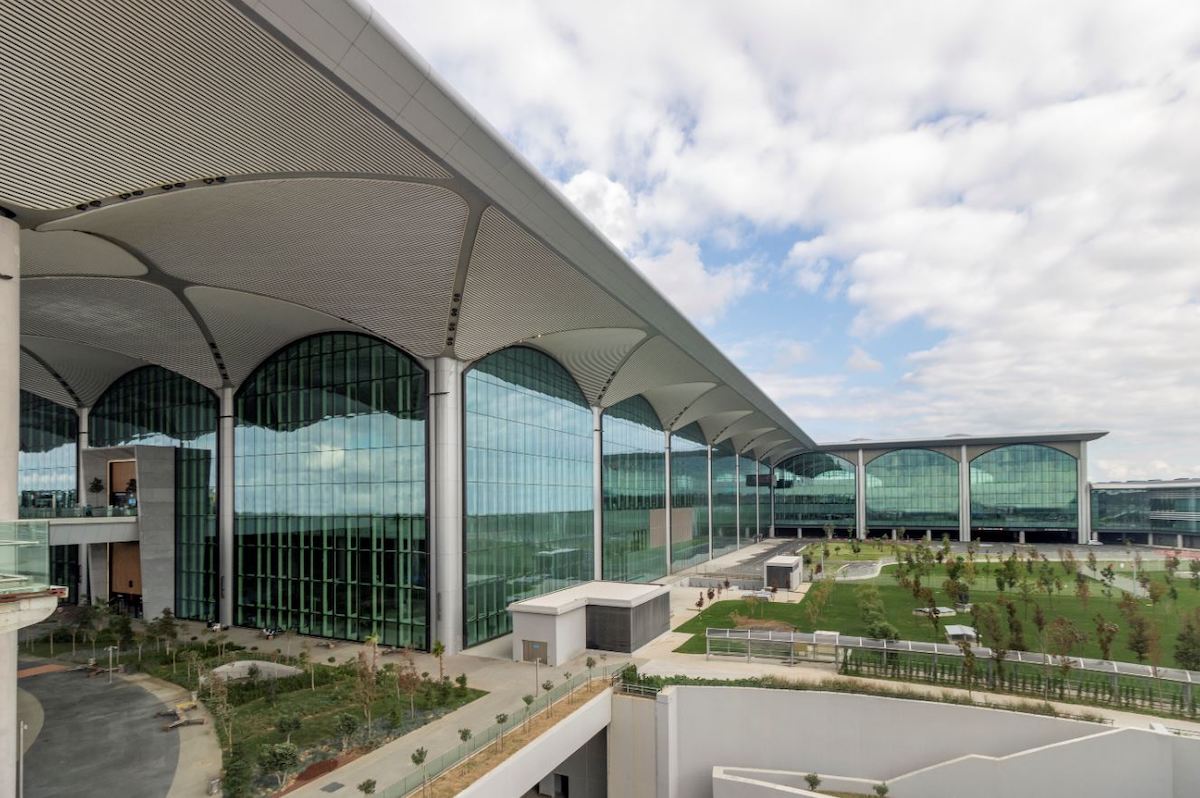Practices, including Studio Bark, Exploration Architecture, Architype, Sheppard Robson, and Skidmore, Owings & Merrill, explain how they advocate for long-term thinking at the outset of their projects.
Exploration Architecture’s Michael Pawlyn leads a workshop on long-term thinking for the Constructivist Regeneration Design Lab (photo: Constructivist Regenerative Design Lab).
Being a good ancestor
Part 1 of the Regenerative Architecture Index focuses on ‘being a good ancestor’. Our decisions today should consider seven generations ahead, ensuring adaptability and flexibility for the future. This requires innovative thought, as current models are rarely beneficial in the long term. Responses in this section were assessed by Architects Declare steering group members Michael Pawlyn, Alasdair Ben Dixon, Zoe Watson and Zuzana Sojkova, with expert insight from Regenerative Architecture Index ambassador, social philosopher and author Roman Krznaric. Read more about Part 1 of the RAI here.
Projects Question 1
Does the practice advocate for long-term thinking at the outset of projects? Do you initiate projects with long-term thinking and challenge the client on design life? Also, can the practice demonstrate that this approach has worked – with a shorter or longer design life, or an innovative approach to financing or payback period?
Front-runner
Studio Bark
U-Build
We developed U-Build, a modular timber construction system that provides an intuitive and accessible approach to self-build. A core principle of this system is demountability, thinking about how a building’s fabric can be readily dismantled and adapted – a true circular economy. The system has already proven itself in short-term settings, such as interior fit-out, where the structure can be demounted and reassembled for entirely new purposes.
Whole Life Carbon
Studio Bark undertakes whole life carbon assessments from the early stages of projects to improve client understanding of the whole life of a building, and to make more informed design choices. On rural sites, we calculate the draw-down potential of on-site offsetting through landscape enhancements; looking at the long-term carbon costs and benefits of each project.
Studio Bark at Nest House with No Building As Usual (NBAU) students, clients Francine and Stephen. The home was built by students using Studio Bark’s U-Build system, with reclaimed timber foundations, natural wool insulation, and a timber floor and roof beams, creating a circular home which is fully demountable at the end of its useful life (photo: Andy Billman).
Runner-up
Exploration Architecture
We regularly use an exercise called Human Layers, developed by The Long Time Project, at the start of a project to raise the level of ambition and promote long-term thinking. On all our projects we encourage our clients to take a long- term view on cost (including not just easily measurable things like resource savings but also intangible things like ethical leadership) in order to make a more compelling case for measures that may cost more at the beginning but deliver long-term planetary value.
Ones to watch
Architype
Architype focuses on long-term planetary goals, including the concept of a 100-year rather than 60-year design life, climate adaptability and holistic approaches. We engage clients by informing, influencing and encouraging action.
We were early champions in promoting whole life cost and carbon, use of local natural materials, using reclaimed assets, and future adaptability. One of our earliest house projects has been deconstructed, moved and reconstructed as the Segal self-build house at the Centre for Alternative Technology. Another project’s design life – initially only a three-month temporary pavilion – is now celebrating nearly two decades. For another school project we have collaborated with the client for 20 years – adapting, improving, and regenerating the site into a high-quality learning urban oasis.
We supported the development of the Scottish Futures Trust innovative financing, which is paid depending on long-term energy performance – radically upskilling the Scottish industry in Passivhaus.
Sheppard Robson
Agility and durability are fundamental to our work. This is true of our speculative projects and designs, which are tuned to the specific occupiers. For the latter, project briefing underpins our designs, allowing us to cater for the client’s current strategies and future eventualities. For example, our long-term partnership with the BBC has seen us design a range of inherently flexible workplaces that have adapted to changes since the pandemic with minimal intervention, using a movable ‘kit of parts’.
Our design review process means that projects are scrutinised by other typology specialists, so we design buildings that can pivot to different uses and lengthen their lifespan. For example, student living that can adapt to being a hotel or BTR development; an office that can be used for labs; or‚ as with the Liverpool Schools Programme (LSP), schools that can be repurposed for a range of workplace and leisure uses.
We Made That
We were one of just four small and micro- sized B-Corps or Social Value organisations to win a free two-year membership of the Social Value Portal’s first Social Value Accelerator Programme. Designed to help organisations enhance their Social Value maturity, the programme represents an important next step in maximising our impact and leadership in delivering social value in the built environment. This has included training for our team through the Social Value Academy and provides access to the Social Value Portal’s tools to benchmark both our projects and our own additional social value as an organisation. Data on our social value performance is being reported back to us on a quarterly and annual basis, enabling us to validate our commitments and sharpen our understanding of the scale and nature of our impact. Access to new data on our social value performance and improved fluency with quantifiable indicators will help us prioritise social value commitments to maximise the benefit we deliver.
Gale & Snowden Architects
Advocating for long-term thinking for all projects is at the heart of the practice’s ethos. We provide clear guidance on low- environmental impact, healthy buildings and a low-energy approach based on sound building physics. We provide an integrated design service to our clients in order to achieve these aims. Our integrated design service includes architects, m&e engineers, building physicists, biologists and landscape designers. We often provide payback period analyses for our clients, such as for the Passivhaus-certified leisure centres we have been involved with in order to help the clients approve a Passivhaus approach.
Over the years, the practice has developed solutions to challenges including designing and patenting a thermal bridge-free timber twin-frame system (for building in schools and housing); a green oak cladding system allowing the use of UK wood with the least amount of processing; and triple-glazed windows and doors manufactured in the UK using UK hardwood and natural finishes.
Skidmore, Owings & Merrill
In addition to advocacy, we also help to launch key climate-focused initiatives and shape public policy. This is best demonstrated by examples, including the RIBA 2030 Climate Challenge and MEP 2040 which advocates for all building systems and services engineers to achieve net zero whole life carbon in all of their projects by 2040. Additionally, in New York City, one of our team forms part of the steering committee for the Decarbonizing New York City Offices initiative, guiding the NYSERDA/Building Energy Exchange (BE-Ex) and their partners to drive sustained decarbonisation of leased office spaces. Through this approach, we are advocating for change and shaping the way the industry at large works.
Marks Barfield Architects
As we have moved forward with our regenerative design strategy over the last few years, at the start of every project, we analyse and question the brief (or help the client curate a brief) which first interrogates the site and community and the need for a new building and prioritises retrofit and reuse. This is directly influenced by long-term thinking regarding the climate emergency – ensuring the design is resilient and adaptable – and the proposed design life, interrogating material and design choices in the face of this. We have recently entirely revamped our material library focusing on low carbon and biomaterials. With all of our projects, particularly our smaller community and charity projects, this is paramount to ensure the client is receiving good value economically, environmentally and socially. We have also successfully helped a number of our clients in applying for funding and financial assistance in achieving these goals.
Tate+Co
As part of our Regenerative Design approach, we foreground how to create multiple positive outcomes to our clients. A third of our client base comes from the charity sector and they are usually looking to pass on assets to future custodians. Another third comprises educational institutions who share a similar structure and mission. These clients’ projects have a longer time horizon than the UK legal, 60-year lifespan.
Our residential work is often more challenging; private clients envisage longer- term ownership whereas our developer clients have difficulty in financially structuring the promotion of positive outcomes in the longer term. Generally, we seek clients such as Keyland/Yorkshire Water who retain the majority of land around a development and therefore maintain a long-term interest. We have been working with Igloo Regeneration and the Crown Estate on a new form of government-backed tenancy for a housing scheme that would promote a long-term attitude towards residential development.







